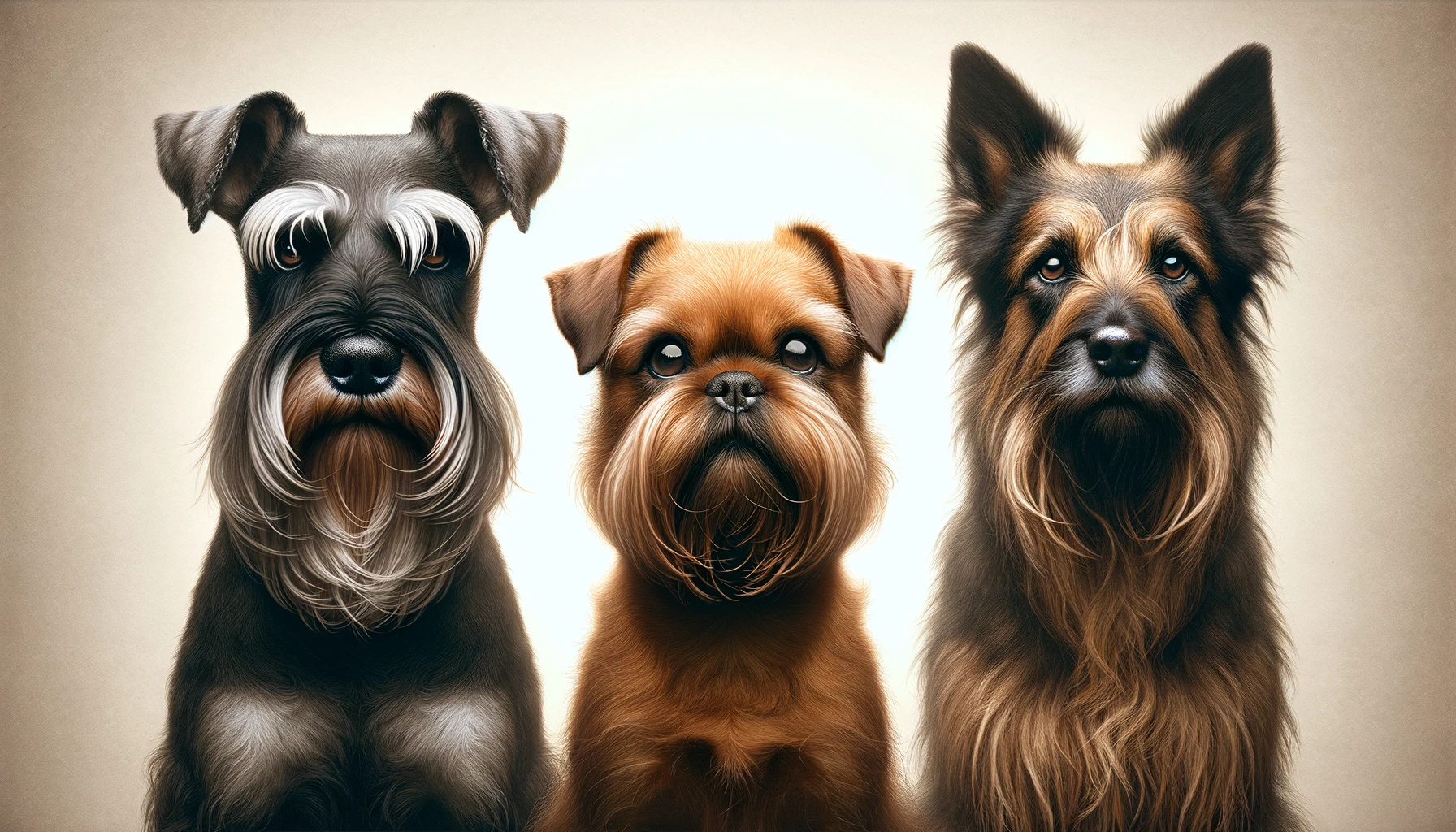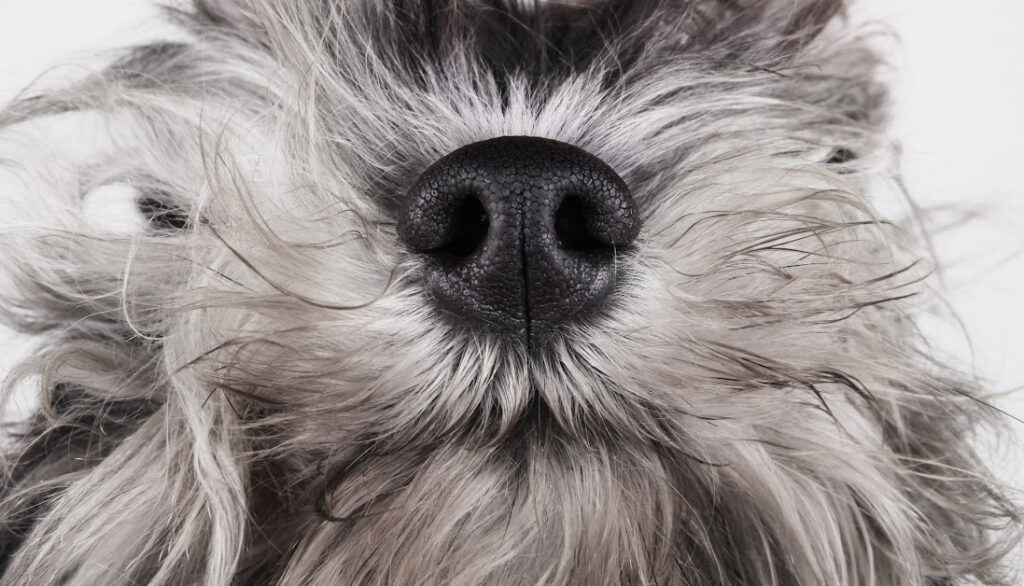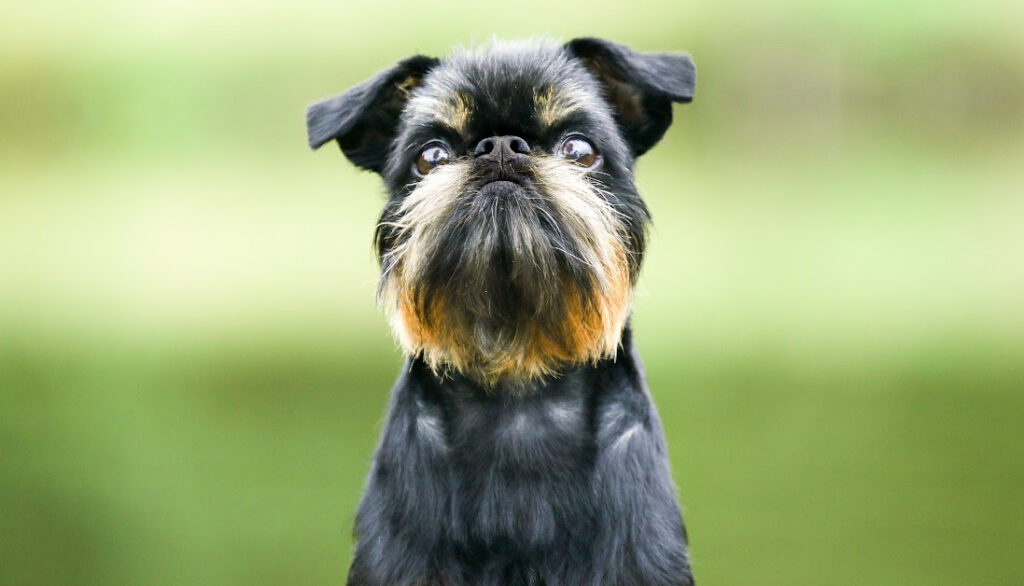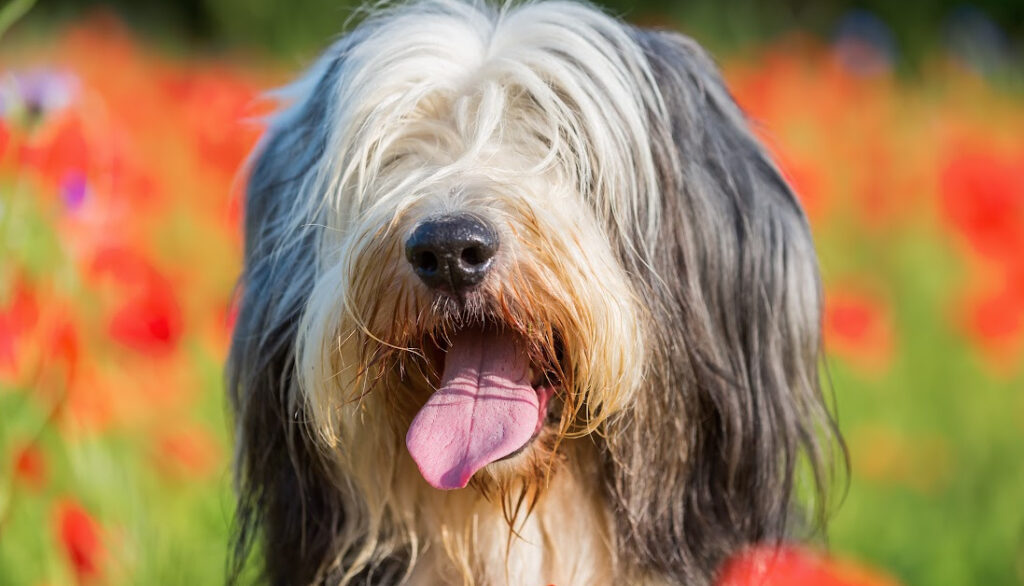Welcome, fellow dog lovers! If you’re as smitten as I am with pooches that sport a bit of facial fluff, then you’ve come to the right place. Our topic today is a fun one, as we delve into the world of dog breeds with beards. Yes, you read it right – beards on dogs! From the sophisticated Schnauzers to the scruffy Brussels Griffon, these chin-tufted canines have a unique charm that’s quite irresistible, don’t they?

These bearded breeds are more than just a quirky feature, they’re a testament to their rich history and breed evolution. Originally, these beards served a functional purpose as it protected the dog’s mouth from dirt and other harmful particles during their working days. But today, these beards not only add an air of nobility to certain breeds, but they have become a signature trait that dog enthusiasts from around the world have come to love.
The variety of bearded dog breeds is vast, encompassing small-sized breeds like the Affenpinscher to large-sized ones like the Otterhound. Each of these dogs is unique in its own way, and understanding their specific traits can help you decide which bearded companion would be the perfect fit for your family.
Taking care of a bearded dog breed also comes with its own set of grooming essentials. Maintaining a healthy beard requires regular trimming, brushing, and sometimes even special products to keep it clean and tangle-free. But don’t worry, I’ll guide you through some useful grooming tools and techniques to ensure your furry friend always looks his or her best.
Understanding the health considerations, training needs, ideal living environments, and adoption processes will also be part of our journey. Every dog parent should be well-informed about these aspects to provide a happy, healthy life for their bearded companions. So, let’s embark on this exciting journey together and unravel the charm of these magnificent bearded canines. I’m sure by the end of it, you’ll be as captivated by these bearded beauties as I am!
The History of Bearded Dog Breeds
Evolution of Bearded Breeds
Have you ever wondered how your favorite bearded dog breeds got their distinctive facial hair? We are about to embark on a fascinating journey through time! The evolution of bearded dog breeds is a story that intertwines with the evolution of mankind itself. Dogs have been our faithful companions for thousands of years, and their physical traits often evolved to match their roles in human society.
Many bearded dog breeds evolved in cold climates where their beards served a practical purpose – to keep them warm! For instance, the dazzlingly shaggy Old English Sheepdog, with its signature beard, was bred in the chilly regions of England. Its beard, along with its dense double coat, helped it to withstand harsh weather conditions while herding livestock.
Then we have the Airedale Terrier, often referred to as the ‘King of Terriers’, which boasts a luxurious beard that hints at its origins as a multi-purpose working dog in the Aire Valley of Yorkshire, England. Its beard helped to protect its sensitive face while it was hunting or working in rugged terrains.
Cultural Significance of Bearded Canines
Delving deeper, the history of bearded dog breeds is rich with cultural significance. These bewhiskered canines were more than just companions; they were often symbols of status and prosperity.
Take the distinguished Schnauzer, for instance. This noble German breed, characterized by its robust beard, was often seen in the company of merchants and nobility in the Middle Ages. Its distinctive appearance was a mark of prestige, and its function as a ratter, keeping stores and stables free from vermin, was highly valued.
Similarly, the Affenpinscher, or the ‘Monkey Dog’, was a favorite among the ladies of high society in 17th and 18th century Europe. This petite, bearded breed was cherished for its delightful appearance, and its ability to keep households free from rodents only added to its appeal.
It’s fascinating to realize that the beards we find so endearing on our canine companions have such rich histories, having evolved to provide practical benefits or to symbolize status. Today, these beards add to the charm of these breeds, making them an irresistible choice for dog lovers.
So, next time you look at your bearded buddy, remember that you’re not just looking at facial hair. You’re looking at a symbol of survival, a mark of status, and a charming trait that has stood the test of time.
But let’s not forget, whether your dog is a bearded breed or not, it’s the love and companionship that they offer that truly matters. After all, each and every dog breed has its own unique charm and history to celebrate. While we might be partial to those with a little extra fuzz on their faces, the truth is, there’s no such thing as a bad dog breed. Just different types of good dogs. So, let’s continue to cherish our canine companions, beards and all.

Popular Bearded Dog Breeds
Bearded dog breeds have a distinct charm that makes them stand out. These breeds feature a variety of sizes, shapes, and characteristics. Here are some of the most popular bearded dog breeds, categorized by their size.
Small-Sized Bearded Breeds
Don’t let their small stature fool you – these bearded breeds pack a punch when it comes to personality and charm.
- Miniature Schnauzer: Known for their distinguishing ‘stache and beard, these robust little dogs are intelligent, energetic, and affectionate.
- Brussels Griffon: With their human-like expressions complimented by a noticeable beard, Brussels Griffons are known for their big personalities.
- Dandie Dinmont Terrier: This breed’s unique look comes from their soft and fluffy hair, which includes a beard. They’re friendly, bold, and intelligent dogs.
- Scottish Terrier: Often called “Scotties,” these fierce, small dogs sport a distinctive beard, adding to their regal appearance.
Large-Sized Bearded Breeds
For those looking for a larger companion, here are a few big dogs with equally big beards.
- Bearded Collie: As the name suggests, this breed sports a beautiful beard. They’re known for their herding abilities, intelligence, and lively personality.
- Black Russian Terrier: This majestic breed flaunts a significant beard, giving them an imposing look. They’re calm, confident, and protective.
- Giant Schnauzer: Much like their miniature counterparts, Giant Schnauzers also have a prominent beard. These dogs are versatile, intelligent, and can be quite protective.
- Bergamasco Shepherd: This breed’s most noticeable feature is their unique matted coat, which includes a beard. They’re patient, observant, and intelligent.
Whether you prefer small or large breeds, one thing’s for certain: dog breeds with beards are endearing, charming, and bring an extra bit of personality to any home.
When choosing a bearded canine companion, it’s important to consider more than just their looks. Each breed has its own unique set of needs, traits, and behaviors, so be sure to do a thorough research before bringing home your bearded buddy.
Grooming Essentials for Bearded Dog Breeds
If you’re the proud parent of a bearded dog breed, you’ll know that their charming facial hair requires a bit of extra attention. Here are some crucial grooming tips to keep your pup’s beard healthy and handsome.
Maintaining a Healthy Beard
The first step in grooming dog breeds with beards is maintaining a healthy beard. Regular grooming not only keeps your furry friend looking their best but also prevents a host of potential health issues.
– Regular combing: You should comb your pup’s beard daily to remove any dirt or food that might have gotten stuck in there. This will prevent matting and tangling.
– Cleanliness: A clean beard is a healthy beard. It’s important to wash your dog’s beard frequently to avoid any foul smells. You can use a dog-friendly shampoo or facial foam.
– Trimming: Some beards might need occasional trimming to maintain their shape or prevent them from becoming too long. Make sure to use a professional groomer or follow safe trimming practices if you choose to do it yourself.
Grooming Tools and Techniques
The right tools can make a world of difference when grooming your bearded dog breed. Here are some essentials:
– Grooming comb: A metal comb with both wide and narrow teeth is ideal for combing through the beard, untangling any knots without pulling on your dog’s fur.
– Shampoo or facial foam: A gentle, dog-safe product will keep your dog’s beard clean without irritating their skin.
– Beard conditioner: This can help soften your dog’s beard, making it easier to brush and less prone to breakage.
– Towel: Having a dedicated towel for your dog’s face will keep their beard dry and clean after washing.
When grooming your dog’s beard, always be gentle to avoid causing discomfort or stress. Start by combing the beard to remove any loose hair or dirt, then wash it with your chosen product. Rinse thoroughly to ensure no soap is left behind, as this can cause irritation. Dry the beard well after washing to prevent any damp-related issues.
Remember, patience is key when grooming dog breeds with beards. It might take some time for your dog to get used to the routine, but with consistency, they’ll look forward to their grooming sessions, and their beard health will greatly improve. Happy grooming!

Health Considerations for Bearded Dog Breeds
Common Health Issues in Bearded Breeds
Just like any other dogs, bearded breeds are prone to certain health issues. The good news is, most of these issues are manageable with the right care and attention. Let’s have a look at some of the common health problems these adorable chin-tufted canines might face:
- Skin Infections: Due to their long facial hair, bearded dog breeds are more susceptible to skin infections. Dirt and bacteria can easily get trapped in their beards, leading to infections if not cleaned regularly.
- Eye Problems: Some bearded breeds, like the Shih Tzu or Schnauzer, have hair that can irritate their eyes, leading to issues like conjunctivitis or corneal ulcers.
- Dental Issues: Food particles can get stuck in their beards and near their mouth, which can lead to dental problems if not cleaned properly.
- Ear Infections: Breeds with long, droopy ears like the Bearded Collie are prone to ear infections due to the lack of air circulation.
Preventative Care for Bearded Dogs
Prevention is always better than cure. Here are some preventative measures you can take to ensure your bearded breed stays healthy and happy:
- Regular Grooming: Regular grooming is essential for these breeds. Make sure to clean their beards after meals and walks to prevent the buildup of bacteria. Trimming the hair around their eyes can also help prevent eye problems.
- Dental Care: Brush your dog’s teeth regularly to prevent dental issues. Also, consider giving them dental chews that can help clean their teeth.
- Ear Cleaning: Clean your dog’s ears regularly to prevent ear infections. If your dog has droopy ears, make sure to check them often for signs of infection.
- Regular Vet Check-ups: Regular vet visits are crucial for early detection and management of potential health issues. Your vet can also provide you with more personalized advice based on your dog’s breed and health condition.
Remember, every dog is unique, and each breed has its own set of health considerations. It’s important to do your research and understand the specific needs of your bearded companion. After all, these furry friends with their charming beards bring so much joy and happiness into our lives, it’s only fair we do our best to ensure they live a long, healthy, and happy life.
Behavioral Traits of Bearded Breeds
When it comes to the behavioral traits of dog breeds with beards, each breed has its unique characteristics. However, you’ll notice that many bearded breeds share some common traits. Let’s delve into some of these.
- Sociability: Bearded breeds are often sociable and affectionate. They thrive on human interaction and love being part of the family. This makes them great companions, especially for families with children.
- Intelligence: Many bearded breeds are known for their intelligence. This can make training more straightforward, but it also means they may need mental stimulation to prevent boredom.
- Energy: Another common trait of bearded breeds is their high energy levels. Regular exercise and play sessions are essential to keep these dogs happy and healthy.
- Loyalty: Bearded breeds are often quite loyal to their families. They can be protective and make excellent watchdogs, but this trait can sometimes lead to overprotectiveness if not correctly managed.
Training Tips for Bearded Canines
Training a bearded dog can be a fun and rewarding experience. Here are some tips to get you started:
- Start early: Like all dogs, bearded breeds benefit from early training. Start with basic commands like ‘sit’, ‘stay’, and ‘come’ when they’re puppies and gradually move on to more complex tasks.
- Use positive reinforcement: Positive reinforcement, such as treats, praises, and petting, helps in making training sessions enjoyable for your dog.
- Keep sessions short: Training sessions should be short and fun to keep your dog’s attention. Long sessions can lead to frustration for both you and your dog.
- Be consistent: Consistency is key when training your dog. Make sure everyone in the family uses the same commands and follows the same rules to avoid confusing your furry friend.
- Socialization: Socializing your bearded dog with other dogs, people, and environments is crucial. It helps them learn how to behave appropriately and reduces the chances of them developing fear or aggression.
Remember, every dog is unique, and what works for one might not work for another. It’s important to understand your dog’s individual needs and tailor your training accordingly. And don’t forget, always train with love and patience. Your bearded canine companion will thank you for it!

The Best Living Environments for Bearded Dog Breeds
As a prospective dog parent, you’re probably wondering what kind of home environment is ideal for dog breeds with beards. After all, just like us, our furry friends also have specific needs and preferences. Let’s explore the factors that come into play when it comes to indoor and outdoor spaces, and how these breeds adapt to different climates.
Indoor vs. Outdoor Spaces
Most bearded dog breeds, such as the Affenpinscher or Miniature Schnauzer, are known for their adaptability. They usually do well in both indoor and outdoor settings. However, their beards can pick up dirt and debris while outdoors, which means a bit more grooming might be necessary. On the other hand, these breeds are also quite comfortable in indoor environments, making them excellent companions for apartment dwellers or those with limited outdoor space.
- Indoor Space: When indoors, these breeds need their own designated space. This could be a comfortable dog bed or a crate where they can relax and rest. Also, ensure the indoor space is safe and free from objects that might hurt them or get tangled in their beards.
- Outdoor Space: If you have a yard, these breeds will enjoy the freedom to roam and explore. However, make sure your outdoor space is secure and fenced to prevent them from wandering off.
Adapting to Different Climates
One of the most important features of bearded dog breeds is their adaptability to different climates. Thanks to their dense fur and facial hair, they can tolerate both cold and moderate climates fairly well. However, they might struggle in extremely hot conditions due to their thick coats.
When it comes to cold climates, breeds like the Bearded Collie and the Schnauzer can tolerate the cold fairly well. Their thick coats provide excellent insulation. However, you should still provide warmth and shelter during harsh winters.
On the other hand, in hot climates, bearded dogs may struggle a bit. You’ll need to make sure they have plenty of fresh water and shade if they’re spending time outside. Also, you might need to trim their fur and beard regularly to keep them cool.
To sum up, while dog breeds with beards are quite adaptable, they do have some specific needs when it comes to their living environments. Whether you live in a city apartment, a suburban house with a yard, or in a countryside setting, with a little attention to their needs, these charming chin-tufted canines can make themselves right at home.
Adopting a Bearded Dog Breed
Where to Find Bearded Breed Dogs for Adoption
If you’re eager to bring a bearded dog into your family, you’re surely wondering where you can find dog breeds with beards for adoption. There are many routes you can take to find your perfect furry companion with a fabulous beard.
First and foremost, local animal shelters and rescue organizations are often home to a broad array of hairy dog breeds. These places are always in need of loving homes for their pets, and you might just find a bearded breed waiting for you there. The staff at these facilities can also provide useful information about the specific needs and characteristics of the bearded breeds they have available.
Breed-specific rescue organizations are another excellent resource. These groups focus on rescuing and rehoming specific breeds, so if you have a particular bearded breed in mind, this could be a great way to find your new pet. Websites such as Petfinder and the American Kennel Club (AKC) can provide contact information for these organizations.
Preparing Your Home for a Bearded Companion
Once you’ve found your bearded pooch, it’s key to prepare your home for their arrival. Each breed has unique needs, so make sure you familiarize yourself with the specific requirements of your chosen breed. Below I’ve detailed some general considerations to help you get started:
- Space: Bearded breeds, from small to large, tend to have a lot of energy. Make sure you have enough space for them to move around and play. A secure backyard is a bonus for breeds that love to explore.
- Grooming Essentials: Bearded dogs require regular grooming to keep their beards clean and mat-free. Stock up on grooming tools such as a quality dog brush, dog-safe shampoo, and beard wipes.
- Health Care: Schedule a check-up with a vet soon after adoption to ensure your bearded companion is in good health. Ask for advice on diet, exercise, and preventive care specific to your bearded breed.
- Comfort: A comfy dog bed, toys, and a cozy crate (if crate training) are vital. Remember, transitioning to a new home can be stressful for dogs, so these comfort items can help them feel secure.
Bringing a bearded dog breed into your home can be a rewarding experience. They’re not only cute and eye-catching but also diverse in terms of personality, intelligence, and companionship. By adopting, you’re giving a second chance to a dog who’s eager to become part of a loving family. Just remember, while their beards might be part of their charm, it’s their heart that will truly win you over. So, prepare your home, get ready to groom that adorable furry face and make way for your bearded companion. The love and loyalty they bring will undoubtedly make every effort worthwhile.
Frequently Asked Questions
Q1: What are some dog breeds with beards?
A: Some dog breeds with beards include the Schnauzer, Scottish Terrier, and the Bearded Collie.
Q2: Does the beard on a dog serve any specific purpose?
A: The beard on a dog can serve several purposes, including protection from the elements and aiding in sensory perception.
Q3: How should I care for my dog’s beard?
A: Regular grooming is essential for dogs with beards. This includes brushing to remove any food or debris and occasional trimming to keep the beard neat.
Q4: Are there any health issues associated with dogs with beards?
A: While not directly related to the beard itself, some breeds with beards may be prone to certain health issues. Regular grooming and check-ups can help identify any potential problems early.
Q5: Do all dogs of a certain breed have beards?
A: Not necessarily. While certain breeds are known for their beards, not every dog of that breed may have one. It can depend on the individual dog’s genetics.
Dr. Candy, a holistic veterinarian and certified raw dog food nutrition specialist, graduated from Oklahoma State University in 2009 with a DVM and has since specialized in companion animal nutrition, advocating for species-specific diets. With a background in wildlife rehabilitation and oil spill response, she combines holistic health and conventional medicine in her unique approach to treating chronic diseases, allergies, and autoimmune conditions in pets. As the owner of a veterinary practice in Colorado and an author, Dr. Candy is dedicated to educating pet parents and improving the health and happiness of animals.




